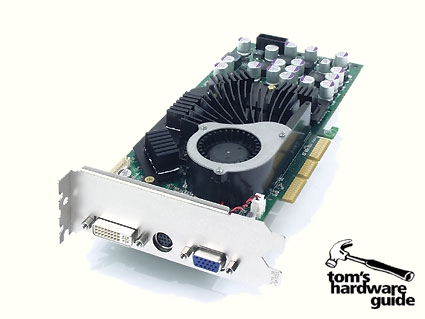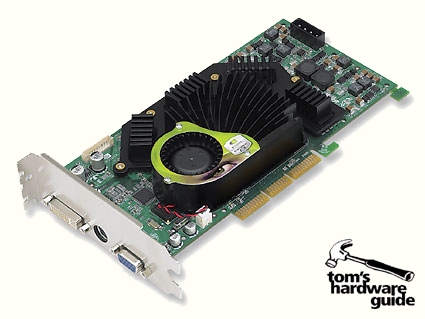NVIDIA GeForceFX 5900 Ultra: The Way FX is Meant to be Played!!
Floating Point Ops
NVIDIA has also done some work on the pixel shader units. NV35 is able to process twice as many floating-point operations as NV30, and even more in some cases. If the runtime compiler is able to optimize the code even further, performance improvements of more than two times become possible. It remains to be seen what impact this improvement will have on overall performance in the real world.
Summary
First impressions can be deceiving. The cooling fins on the memory are not completely solid, but hollow.
Okay, that was the long version. Here's a summary of the changes made to the FX 5800 Ultra in its transformation to the FX 5900 Ultra:
- DDR(-I) memory at 425 MHz instead of DDR-II memory at 500 MHz;
- Memory bus widened from 128 to 256 bits;
- Memory bandwidth of 27.2 GB/s (NV35), up from 16 GB/s (NV30);
- GPU clockspeed decreased from 500 MHz to 450 MHz;
- Ultra versions of the FX 5900 will carry 256 MB RAM;
- New, much less noisy cooling solution;
- CineFX gains new "UltraShadow" feature and is now called CineFX 2.0;
- IntelliSample optimizations, especially color compression, have been improved and renamed IntelliSample HCT (High Compression Technology);
- In addition to the FX 5900 Ultra 256 MB ($499 ESP), a standard FX 5900 128 MB ($399 ESP), and a GeForceFX 5900 Value 128 MB ($299 ESP) will also be offered.
The DirectX 9 features and capabilities of the CineFX engine remain unchanged.
The card we received for testing is a prototype version. The PCB of the final shipping version will look like this. The colors of the fan might change as well.
Get Tom's Hardware's best news and in-depth reviews, straight to your inbox.

